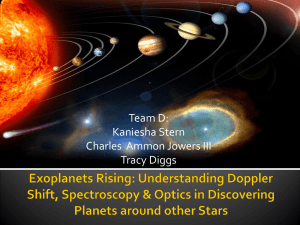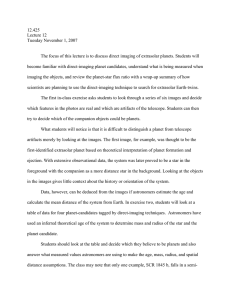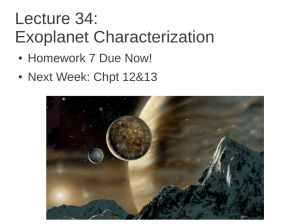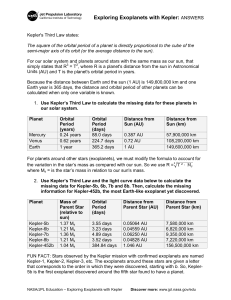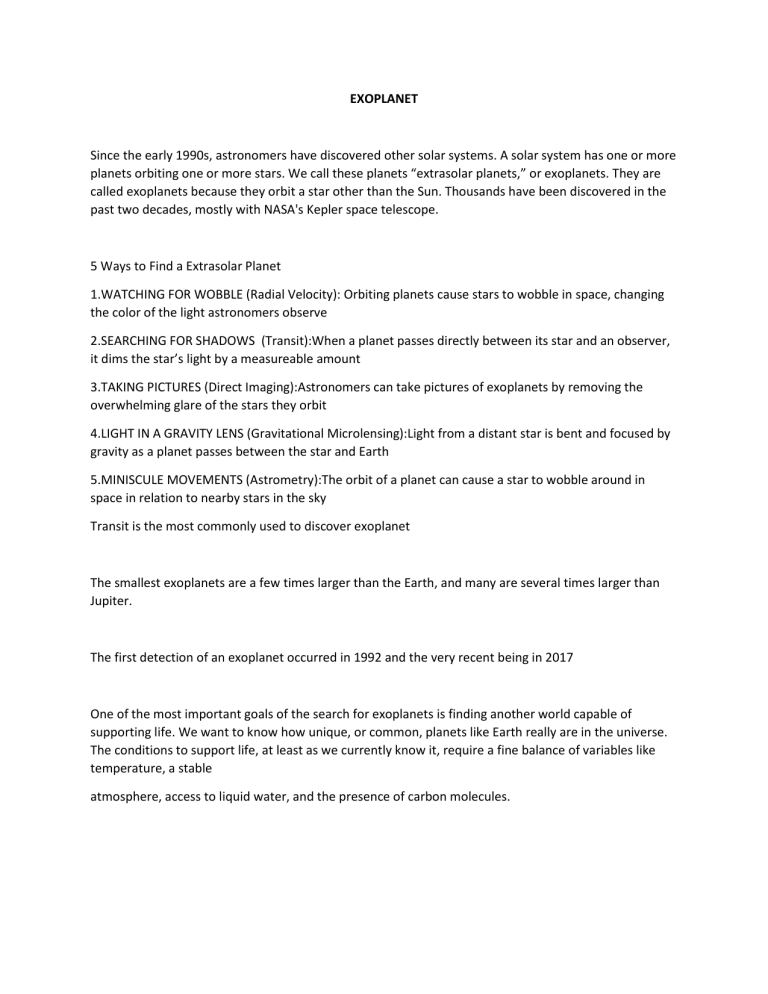
EXOPLANET Since the early 1990s, astronomers have discovered other solar systems. A solar system has one or more planets orbiting one or more stars. We call these planets “extrasolar planets,” or exoplanets. They are called exoplanets because they orbit a star other than the Sun. Thousands have been discovered in the past two decades, mostly with NASA's Kepler space telescope. 5 Ways to Find a Extrasolar Planet 1.WATCHING FOR WOBBLE (Radial Velocity): Orbiting planets cause stars to wobble in space, changing the color of the light astronomers observe 2.SEARCHING FOR SHADOWS (Transit):When a planet passes directly between its star and an observer, it dims the star’s light by a measureable amount 3.TAKING PICTURES (Direct Imaging):Astronomers can take pictures of exoplanets by removing the overwhelming glare of the stars they orbit 4.LIGHT IN A GRAVITY LENS (Gravitational Microlensing):Light from a distant star is bent and focused by gravity as a planet passes between the star and Earth 5.MINISCULE MOVEMENTS (Astrometry):The orbit of a planet can cause a star to wobble around in space in relation to nearby stars in the sky Transit is the most commonly used to discover exoplanet The smallest exoplanets are a few times larger than the Earth, and many are several times larger than Jupiter. The first detection of an exoplanet occurred in 1992 and the very recent being in 2017 One of the most important goals of the search for exoplanets is finding another world capable of supporting life. We want to know how unique, or common, planets like Earth really are in the universe. The conditions to support life, at least as we currently know it, require a fine balance of variables like temperature, a stable atmosphere, access to liquid water, and the presence of carbon molecules. No life has been found on any exoplanet so far. Scientists think our best chance for finding life exists on Earth-sized planets or rocky moons orbiting planets in the habitable zones of stars. With telescopes like Kepler searching for evidence of these worlds, we may be on the verge of finding out just how unique or common Earth really is in the universe.
